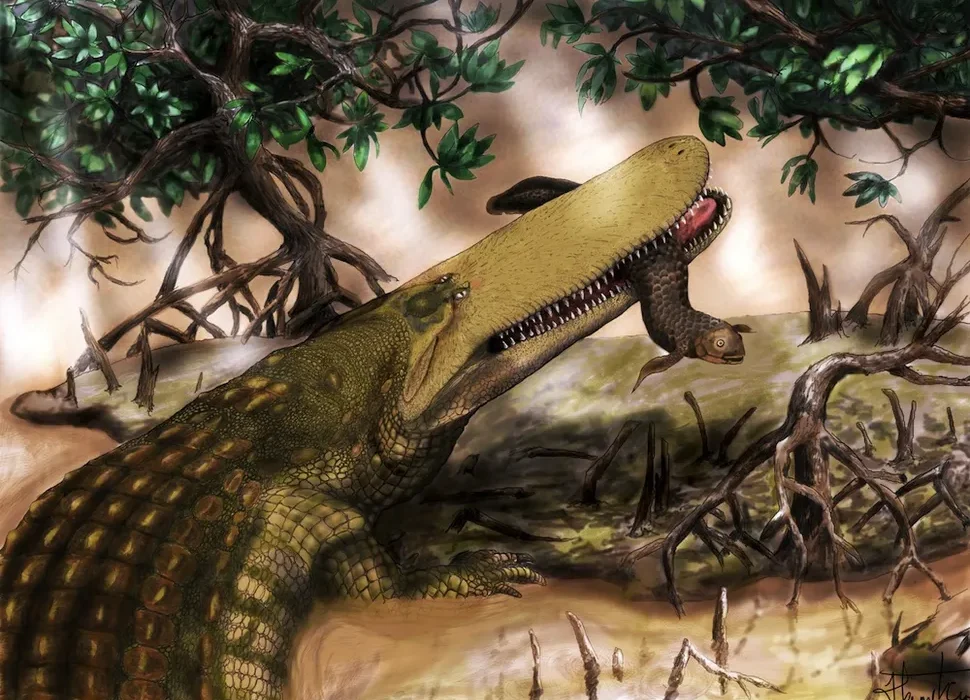In the dense, vibrant world of the rainforest canopy, where the air is thick with moisture and the sun filters through layers of green, researchers have uncovered a surprising clue about how these lush ecosystems might respond to the growing threat of climate change. The discovery? Boiling leaves at the top of the rainforest canopy might just be the key to understanding how tropical forests could survive rising temperatures—and, in turn, how they could help shape Earth’s future climate.
This unusual experiment, led by a team from Northern Arizona University (NAU) and the Smithsonian Tropical Research Institute, took a hands-on approach to studying how the future heat from climate change might affect the life at the top of the rainforest—an area that had never been explored in quite this way before. And as strange as it sounds, boiling the leaves to understand their heat death turned out to be an unexpectedly positive sign for the survival of tropical forests.
The Unexpected Tea Party in the Canopy
The story begins with a question that’s been haunting climate scientists: How vulnerable are tropical forests to the effects of climate change? These forests, which are among the most biodiverse and carbon-rich ecosystems on Earth, are a crucial line of defense against the planet’s warming. But with rising temperatures, could they collapse? Would the heat be enough to kill off large sections of the forest?
In a previous study, the team had found that, under higher temperatures, certain leaves in tropical forests could get hot enough to die—a process known as “heat death.” This sparked a concern that if a single leaf died, it could heat up the leaves surrounding it, creating a deadly cascade that would jeopardize the entire forest. However, no one had tested this theory in the often-untouched upper canopy, where the sunlight is most intense and the temperatures can soar.
That’s where the experiment came in. Using a canopy crane, the researchers reached into the uppermost layers of the forest to collect living leaves from the rainforest trees. These leaves, taken from a forest in Panama, were then submerged in boiling water—an unconventional yet straightforward way to replicate the heat death scenario expected from climate change. The goal was to watch what happened to the surrounding leaves once the heat killed off their neighbors.
The Unlikely Lifesaver: A Bright Leaf
What the researchers discovered from their steaming experiment was nothing short of surprising. As expected, the dead leaves were unable to reflect the heat in the same way as a living leaf. But the real twist came when they found that the dead leaves did not heat up the surrounding living leaves as much as they feared. Instead, once the leaves died, they actually became much brighter.
This is important because, when leaves die, they no longer have the ability to cool themselves by evaporating water—a process known as transpiration. But in their death, these leaves took on a new behavior: they reflected much more sunlight, cooling the surrounding environment. “This unexpected result is good news,” said Chris Doughty, an ecoinformatics professor at NAU and the lead researcher on the study. “It means that upon death, leaves do not heat up surrounding leaves as much as we thought, so tropical forests may be less sensitive to climate change.”
The finding was a relief to scientists who feared that the death of one leaf would trigger a rapid chain reaction, wiping out large areas of forest. Instead, it suggested that the forests might have more resilience than previously believed.
Dark Leaves, Darker Questions
But the experiment didn’t stop there. In another twist, the team decided to investigate what happens when leaves darken—a potential result of climate change. Previous studies had indicated that, as the world warms, tropical forest leaves might grow darker and thinner to help them cope with the intense sunlight. But would darker leaves absorb more heat, or would they simply work harder to cool themselves?
The researchers created their own darkened leaves by smearing charcoal on them, mimicking the climate-induced darkening process. What they found was both simple and revealing: the darkened leaves didn’t necessarily become hotter, as some had feared. Instead, they evaporated more water to keep themselves cool. This discovery flew in the face of predictions made by Earth system models, which had expected darker leaves to become hotter and more prone to heat stress.
This seemingly small difference in leaf behavior could have far-reaching consequences for how scientists predict future climate change. As Martijn Slot, a researcher at the Smithsonian Tropical Research Institute, put it, “It may seem silly to boil leaves at the top of a rainforest, but it actually led to some results that can help us understand the future fate of these bastions of carbon and biodiversity.”
Why This Matters for the Future
The findings of this study are more than just a quirky scientific experiment. They provide hope for the future of tropical forests, which play an outsized role in mitigating climate change by absorbing carbon dioxide. If these forests can survive higher temperatures and more extreme weather, they will continue to act as a buffer against the worst effects of global warming.
Perhaps even more importantly, this research offers a new way of thinking about the resilience of ecosystems in the face of climate change. By studying these forests in such an unconventional way—through the lens of boiling water and charcoal—the team has shown that there are still many aspects of nature we don’t fully understand, and many ways we can test our assumptions. What might have seemed like a small and strange experiment has provided answers that could have profound implications for climate predictions.
This research also highlights the crucial role of tropical forests as carbon reservoirs and biodiversity hotspots. With climate change threatening these ecosystems, any finding that suggests they might be more resilient than previously thought is a cause for optimism. But, of course, the work is far from over. The team’s experiments are just the beginning, and there’s still much to learn about how these forests will cope with the future climate.
In the end, the boiling leaves at the top of the rainforest canopy have taught us an important lesson: sometimes, the answers we’re searching for are hidden in the most unexpected places—and sometimes, a little heat can reveal the future in ways we never anticipated.
More information: Christopher E. Doughty et al, Experimental Manipulations of Albedo and Mortality of Upper Canopy Leaves in a Tropical Forest Diverge From Earth System Model Results, Journal of Geophysical Research: Biogeosciences (2025). DOI: 10.1029/2024jg008495






